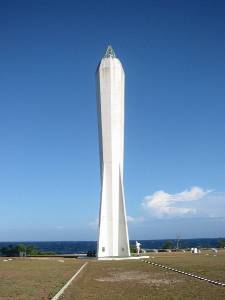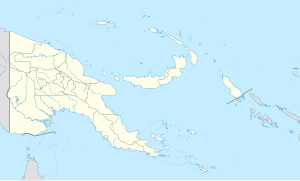Madang
| Madang | |
|---|---|
| Town | |

Coastwatchers Memorial Lighthouse, Kalibobo, Madang
|
|
| Location in Papua New Guinea | |
| Coordinates: 5°13′S 145°48′E / 5.217°S 145.800°ECoordinates: 5°13′S 145°48′E / 5.217°S 145.800°E | |
| Country |
|
| Province | Madang Province |
| District | Madang District |
| Established | 1884 |
| Elevation | 3 m (10 ft) |
| Population (2013) | |
| • Total | 29,339 |
| Time zone | AEST (UTC+10) |
| Climate | Af |
Madang (old German name: Friedrich-Wilhelmshafen ) is the capital of Madang Province and is a town with a population of 27,420 (in 2005) on the north coast of Papua New Guinea. It was first settled by the Germans in the 19th century.
Madang is the home of Divine Word University. The University accepts local and international students.
Russian biologist Nicholai Miklukho-Maklai was probably the first European to visit the area. In 1871 he stayed at Astrolabe Bay just south of present-day Madang for 15 months. He had a good relationship with the local communities before leaving, suffering from malaria.
In 1884 the German New Guinea Company arrived and tried to establish a base at various locations including at present day Madang but were continually beaten by malaria. They eventually moved to Rabaul.
The Japanese invaded and captured Madang without a fight during World War II in 1942. In September 1943, Australian forces launched a sustained campaign to retake the Finisterre Range and Madang. The town was captured on April 24, 1944. During the occupation and fighting the town was virtually destroyed and had to be rebuilt afterwards.
Madang is viewed by many in the country as being safer and more pleasant for expatriates than the larger cities of Lae and Port Moresby. Because of this, some NGOs have chosen Madang as the location of their main offices in country.
...
Wikipedia

